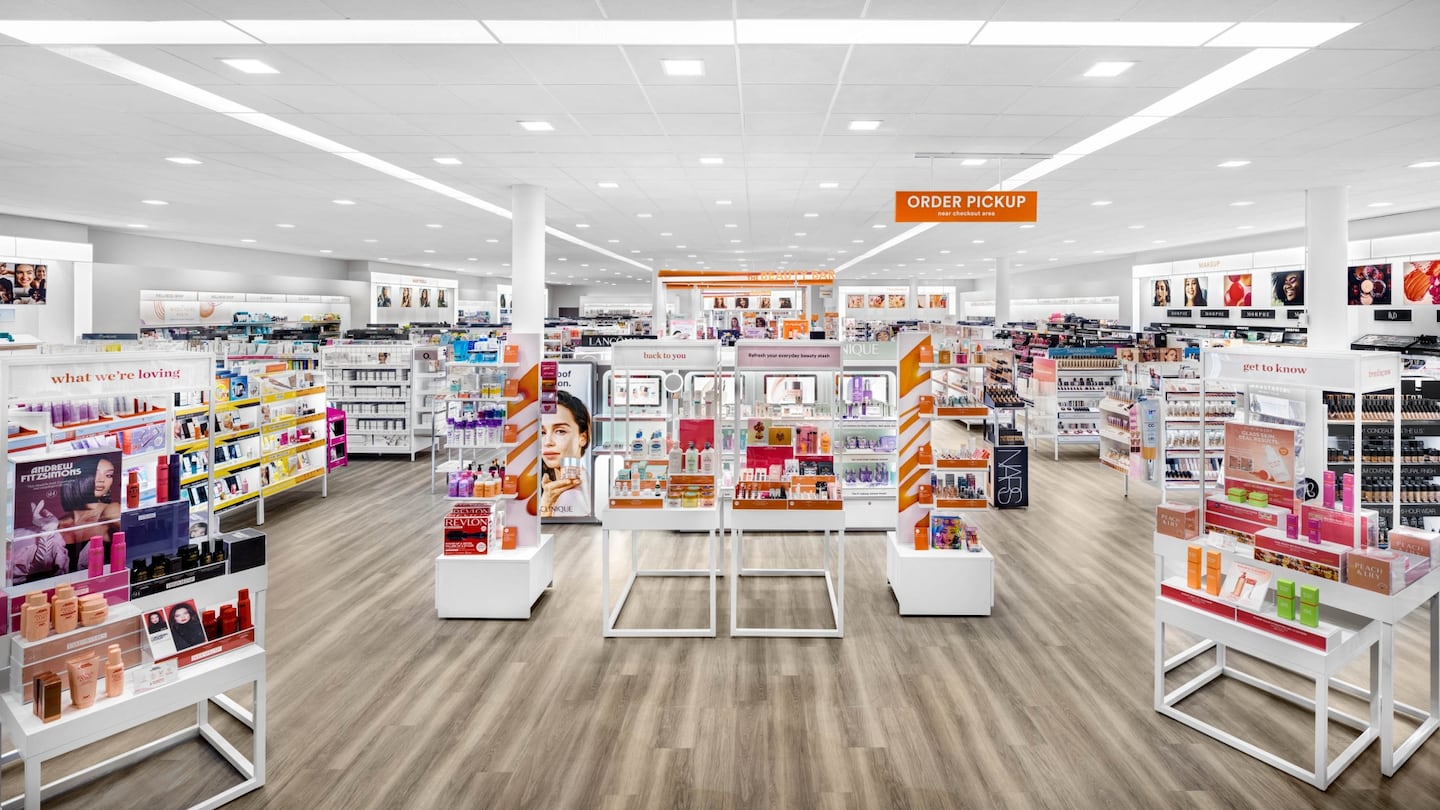
The Business of Fashion
Agenda-setting intelligence, analysis and advice for the global fashion community.

Agenda-setting intelligence, analysis and advice for the global fashion community.

When Loops, a face mask-focussed skin care brand, first launched at the end of 2020, it exclusively sold through its direct-to-consumer channels. After all, the pandemic was raging and in-store shopping was, if not closed entirely, still severely limited.
But after a year, when stores started operating without restriction again, Meg Bedford, Loops’ CEO, gave wholesale opportunities another look.
“We always intended to be an omnichannel brand,” she said. “We know that’s how the beauty shopper shops.”
By the end of 2021, the brand had launched in Ulta Beauty online, and spent much of the next year racking up a list of retail partners, from more fashion and lifestyle-inclined options like Nordstrom and Urban Outfitters to mass market stores like Target. The mix, she said, reflected both stores that would help Loops build brand awareness in addition to places that their existing customers wanted to see them in.
ADVERTISEMENT
Loops is just one of countless beauty brands looking to curate the ideal wholesale roster. As the number of emerging beauty brands has swelled in the past decade, so has the number of retailers selling beauty on their shelves.
For beauty brands looking to ink their first retail partnership in the US, there’s a plethora of options to choose from. There are the behemoths like Sephora and Ulta Beauty, beauty-specific retailers with a devoted following and substantial retail footprint. There’s mass market retail, including Walmart and Target as well as drug stores like CVS, which have invested further in their beauty assortments, going beyond household labels like Neutrogena and Maybelline. Then there are specialty beauty retailers, like Bluemercury and Violet Grey, and digital multi-brand luxury fashion players like Shopbop and Moda Operandi, which have both launched beauty within the past year. And of course, there’s the original beauty purveyors — department stores.
The decision to enter wholesale has never been easier, but at the same time, the stakes are higher. As the direct-to-consumer boom subsides, wholesale partnerships have a renewed focus for new beauty labels.
There’s competition on both sides. For retailers, the race is on to stock shelves with the coolest, most in-demand names, with some demanding exclusivity. But for brands, a prominent wholesale partner is now a must, not simply a nice-to-have, even as early as launch day. Brands, meanwhile, need to consider where existing and potential shoppers are, as well as if retailers can offer sustainable growth.
“We’re paying attention to what our consumers care about and what’s of value to them,” said Monica Arnaudo, chief merchandising officer at Ulta Beauty, when it comes to seeking out new lines. “We look at how the brand aligns to what our guests care about.”
Retailers are always on the hunt for new brand partners, and find them in a variety of ways. They attend trade shows, scour social media, listen to industry chatter, take meetings with founders and even launch accelerator programmes to become de facto pipelines for newness. Their own stores also serve as a guiding force: Retail staff will pass along requests customers make in-store to the corporate team, who will factor those into the brands they end up further evaluating and testing, said Tracy Kline, head of merchandising, spa and supply chain at Bluemercury.
There’s several factors they look for, said Arnaudo, from a compelling founder story to an already-engaged consumer base. Kline added that product efficacy is paramount, because “beauty is a replenishment category” and they’re in the business of encouraging repeat purchases. Most of all, it’s about satisfying consumers and finding lines that both fill a gap in their assortment and make sense being sold next to the brands they already have in stock.
“Don’t lose sight of what your strategy is for that category,” said Kline. “When we’re looking at skin care, we’re looking at medical, clinical brands. You want to make sure that it fits within your strategy, so you’re not disjointed.”
ADVERTISEMENT
Most retailers are open to both established and emerging brands. The perk of the former is that they likely already have a retail partner, and with that, a wealth of data of the best-performing products, what markets they sell well in and more. With emerging brands, however, there’s the clout of landing the next big thing, and there’s greater opportunity to ink an exclusive deal so they’re the only retail partner they’re dealing with.
Brands can be choosy when seeking a wholesale partner. Many have their eye on Sephora, often seen as the end-all, be-all of beauty retail, though there are arguments to be made elsewhere. Target and Walmart, for example, are both investing in their beauty assortments, and offers access to a massive customer base. Curation and focus also matters. Debi Theis, president of perfume label Henry Rose, said that it selected Credo Beauty because of the pair’s shared value of sustainability and clean ingredients.
Brands should think about what they’re hoping to get out of the partnership. Vimla Black-Gupta, co-founder and CEO of skin care brand Ourself, said that it sought out a relationship with Violet Grey because it viewed the luxury beauty retailer as “the arbiter of all things cool and innovative.” But it was more about benefitting from that association in the eye of consumers than solely making sales.
“We didn’t necessarily think of them as like a distribution point, they were more of a megaphone,” said Black-Gupta.
In moving into wholesale, brands should consider what happens after inking a partnership, and what their new partner will do to ensure the brand finds success within a store’s walls.
Retailers are building their own muscle for on-boarding new brands. Ulta Beauty created a team dedicated to working with emerging brands without prior retail experience. Kline said that Bluemercury works with each individual brand it brings on to create a custom roll-out plan, dictating how many doors it’ll sell in to whether it needs help building a field team.
Especially in budding categories that may require more consumer education, brands should look for partners equipped to do that sort of work. Partners should be willing to invest in marketing the brand to its consumers in-store, rather than just leaving them to figure it out on their own. Oftentimes, indie brands with limited resources aren’t equipped for in-store marketing demands like sampling and flashy gondolas without retailers splitting the bill.
“It has never been about being everywhere at once. It’s about choosing our retail partners really carefully,” said Katy Cottam, the founder of UK-based body care label Luna Daily, which in April entered the US market through a partnership with Sephora. In working with Sephora, she hopes to help end taboos around intimate care products and “grow the category together.”
ADVERTISEMENT
And before getting into wholesale entirely, beauty lines should take stock of their own capabilities and evaluate if they’re actually ready for the accompanying demands. Working with retailers requires more inventory, and brands should look closely at their P&L statements and production schedule to ensure they can fulfil those orders. With that, starting with a smaller retailer, or a fewer number of doors can provide an easier transition.
“Make sure that you have the right infrastructure set in place for your brand, because this is not for the faint of heart,” said Theis.
 Opens in new window
Opens in new windowFrom fragrance to skin care to hair care, independent brands are making their mark on the beauty industry, but competition is stiff and scaling these businesses is more complex than ever.
A slew of new entrants, from indies to LVMH-owned giants, are jumping from makeup into skin and “hybrid” concepts. But the road to skin care equity is harder than it looks.
It’s hard to break into beauty, on or offline, even if you’re owned by Amazon. As retailers from Trader Joe’s to Moda try to establish dominance in a category with endless points of distribution, it takes more than just populating your site or shelves with bottles and tubes of skin care to get shoppers to see you as a viable seller of beauty. It takes authority, and usually, exclusive focus (Sephora and Ulta Beauty aren’t trying to sell fashion, after all).

Diana Pearl is News and Features Editor at The Business of Fashion. She is based in New York and drives BoF’s marketing and media coverage.
Beauty labels hope to court the concert set, looking to Coachella, Stagecoach and Lollapalooza for both brand awareness and trendsetting.
Black founders carry a markedly higher burden when it comes to educating investors on the value and viability of their business ideas — but there is an art and science behind knowing when your brand is ready and what kind of investors will be the best fit.
Landing a retail partnership is often seen as a major milestone for beauty founders — but it brings a bevy of new challenges, from the logistical complexities to setting a marketing budget. Black entrepreneurs, who typically have far less capital to work with, often face tough choices.
The firm has been working on a listing since at least 2022, with previous attempts buffeted by volatile markets.